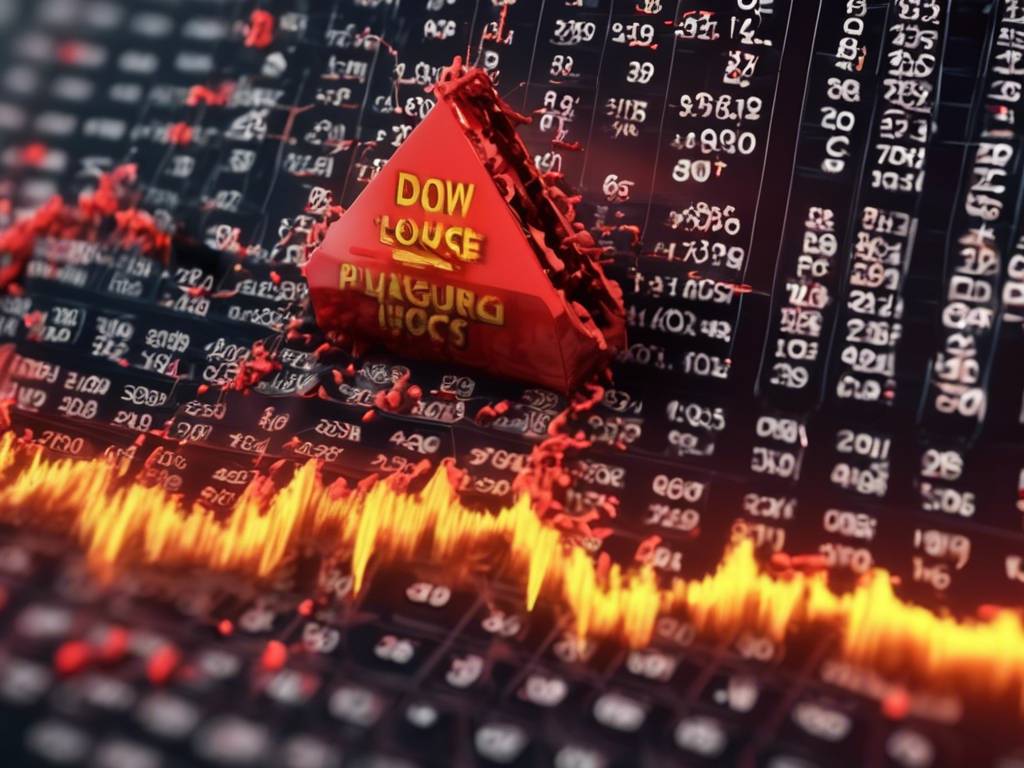Understanding the Wall Street developments in light of the Federal Reserve’s decisions 📉
Wall Street’s main indexes experienced a decline on Tuesday, with a sense of caution prevailing amid the anticipation of the Federal Reserve’s interest-rate decision. Furthermore, stronger-than-expected labor costs suggested persistent inflationary pressures, contributing to the overall market sentiment.
Implications of Labor Cost Surge on Inflation and Interest Rates 🏦
- The increase in U.S. labor costs during the first quarter, fueled by rising wages and benefits, indicates a surge in inflation levels earlier this year.
- This inflationary trend is likely to postpone the anticipated interest rate cut later in 2024, as policymakers assess the economic landscape.
Fed’s Decision-Making Process and Market Perception 💸
- Market experts, such as Jeffrey Roach from LPL Financial, highlight concerns about the delay in the Federal Reserve’s response to changing labor costs.
- There is a growing frustration among investors regarding the Fed’s decision-making timeline and its potential impact on consumer pricing.
Market Expectations and Corporate Earnings Performance 💼
- Money markets anticipate that the Federal Reserve will maintain the current interest rates during the upcoming meeting.
- There is a reduced expectation for rate cuts in 2024, reflecting a shift from the initial projections at the start of the year.
- Corporate earnings reports showcase a mixed performance, with GE HealthCare experiencing a decline while 3M and Eli Lilly surpass expectations.
- PayPal also demonstrates a positive outlook after revising its full-year profit forecast.
Market Analysis and Economic Indicators 📊
- Reports indicate that majority of the S&P 500 companies have exceeded analyst estimates for the first quarter earnings.
- Factors such as elevated inflation, Middle East tensions, and earnings updates have contributed to the volatility in the U.S. equities market.
- The consumer confidence index has witnessed a decline in April, hitting its lowest level in over a year and a half.
Stock Index Performance and Sectoral Trends 📉
- The Dow Jones Industrial Average, S&P 500, and Nasdaq Composite indexes have recorded a downward trend, marking a challenging period for U.S. equities in April.
- Rate-sensitive sectors like utilities and real estate have been among the most impacted, reflecting the current market conditions.
- The energy sector leads the losses with a notable decline, contributing to the overall market sentiment.
Company-Specific Developments and Market Sentiment 📉
- Tesla witnessed a dip in its stock price following recent fluctuations, including CEO Elon Musk’s actions and reports of organizational changes within the company.
- Overall, declining stocks outnumbered advancers on both the NYSE and Nasdaq, indicating a prevailing bearish sentiment in the market.
Financial Market Highlights and Outlook 📊
- The S&P index and Nasdaq reflect a mix of new highs and lows, showcasing the current market dynamics and investor sentiment.
- Analysts are closely monitoring the Federal Reserve’s decisions and economic indicators to assess the future trajectory of the financial markets.
Hot Take: Analyzing the Impact of Recent Market Events on Investor Confidence 📉
As you navigate the complexities of Wall Street and the Federal Reserve’s decisions, it is essential to stay informed about the evolving market conditions. The recent trends in labor costs, corporate earnings, and economic indicators highlight the need for a strategic approach to investment in the current landscape.





 By
By
 By
By
 By
By

